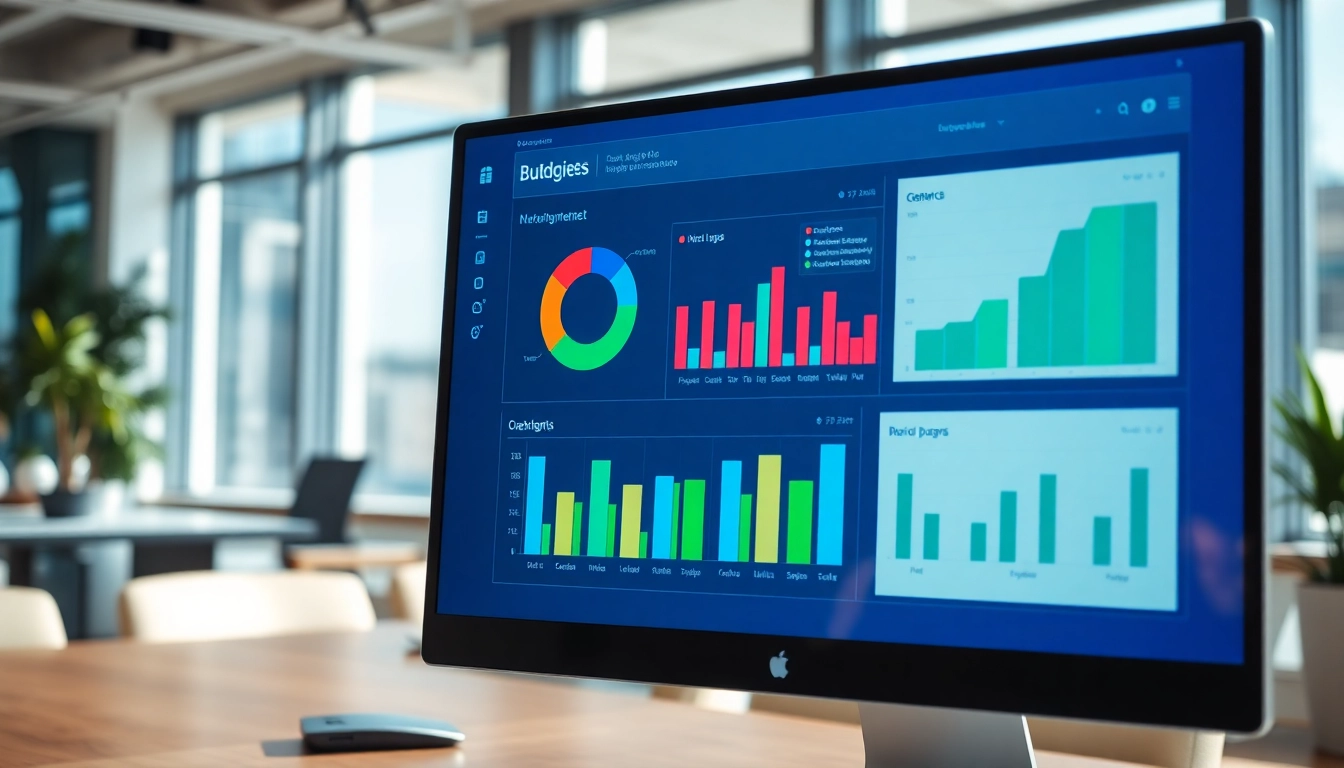Understanding the Importance of a Budget Visualizer
In today’s fast-paced world, managing personal finances has become increasingly crucial. Many individuals find themselves overwhelmed by the complexities of budgeting, allocating resources, and tracking expenditures. This is where a budget visualizer comes into play. It not only simplifies these tasks but also enhances one’s financial literacy, allowing users to visualize their financial landscape effectively and make informed decisions.
What is a budget visualizer?
A budget visualizer is a digital tool aimed at helping users develop a comprehensive understanding of their financial situation through easy-to-read graphical representations. By allowing individuals to input their income, expenses, savings goals, and investment data, a budget visualizer transforms complex numerical data into recognizable patterns and trends, which facilitate decision-making. The output often includes interactive charts, graphs, or dashboards that outline spending patterns and provide an overview of financial health.
Benefits of using a budget visualizer
Utilizing a budget visualizer offers various notable benefits:
- Enhanced Clarity: By converting numbers into visual formats, individuals can easily see where their money is going, identify trends, and adjust accordingly. This clarity eliminates confusion often associated with traditional budgeting methods.
- Improved Financial Awareness: Users become more conscious of their spending habits, leading to better control over finances. Financial literacy is fostered, as users learn to analyze their financial data critically.
- Goal Achievement: With a clear visualization of financial goals, individuals can set realistic targets for savings, investments, and debt repayment, continually monitoring their progress.
- Decision-Making Support: It empowers users to make informed decisions regarding their finances, whether to cut unnecessary expenses or consider new investment opportunities.
Common features of budget visualizers
Many budget visualizers share core features, which may include:
- Expense Tracking: Ability to categorize and track expenses in real time, providing a breakdown of spending.
- Income Input: Entering various income streams allows for a more accurate visual representation.
- Goal Setting: Users can establish financial goals and visually track progress towards achieving them.
- Reports and Analytics: Detailed reports that summarize financial performance, providing insights for future budgeting efficacy.
- Customization: The ability to adjust visual settings to suit personal preferences, making the tool user-friendly.
- Integration: Options to sync with bank accounts or financial institutions for real-time data updates.
How to Choose the Right Budget Visualizer
With a plethora of budget visualizers available, selecting the right tool can be challenging. Here are some key considerations to guide the selection process.
Key considerations for selection
When browsing for a budget visualizer, consider the following:
- Usability: The tool should be intuitive and easy to navigate. A complex interface can deter users from fully utilizing its capabilities.
- Compatibility: Ensure that the visualizer can integrate with existing financial tools you use, such as apps or spreadsheets.
- Features: Identify which features are most crucial for your needs, whether that’s detailed reports, integration capabilities, or specific visualization styles.
- Pricing: Analyze various pricing models to find one that offers value without straining your budget.
Evaluating user experience and accessibility
It’s essential to assess the user experience of any potential budget visualizer. Prospective users should look for platforms that prioritize accessibility, offer a mobile-friendly interface, and provide customer support. Reviewing customer feedback and ratings can give essential insights into the usability and effectiveness of a tool. A successful budget visualizer will enhance user engagement through a functional and pleasing aesthetic.
Comparing pricing models
Budget visualizers come in various pricing structures, including free versions with limited features, one-time purchases, and subscription models. To make an informed choice, consider the following:
- Budget: Determine how much you’re willing to spend and seek options within that range.
- Free Trials: Take advantage of free trials when available, allowing you to evaluate features and usability before committing.
- Long-Term Value: Look beyond initial costs to consider what features you may need in the future and how costs may evolve over time.
Implementing Your Budget Visualizer Effectively
Once you’ve selected a budget visualizer that suits your needs, it’s time to implement it effectively to maximize its benefits.
Setting up your budget visualizer
To start, input accurate financial information, including:
- Income: List all your income sources, including salaries, freelance income, or side jobs.
- Expenses: Categorize your expenses into fixed and variable, ensuring to account for all regular transactions.
- Financial Goals: Set realistic short-term and long-term financial goals to give your financial plan direction.
Completing these initial steps will provide a solid foundation for effective budgeting and tracking.
Integrating personal financial data
Integrating additional financial data can improve the accuracy of your budget visualizer. Options may include syncing bank accounts for automatic updates, utilizing receipts for expense tracking, and importing data from other financial applications. This holistic approach ensures that your visualizer reflects your actual financial situation in real-time.
Utilizing visual insights for better decisions
To get the most out of your budget visualizer, interpret the visual data effectively:
- Trend Analysis: Look for trends over time in spending and saving to adjust your strategies as needed.
- Budget Adjustments: When you notice overspending in specific categories, make necessary adjustments to curb expenses and stay within financial limits.
- Financial Projections: Utilize visual projections to forecast future financial positions, helping in better planning and decision-making.
Advanced Tips for Maximizing Your Budget Visualizer
Enhancing your experience with a budget visualizer goes beyond basic use. Here are advanced tips for getting the most value from your tool.
Customizing visualization options
Most budget visualizers offer customization capabilities to align with individual preferences. Adjust visual settings such as colors, chart styles, and layouts to make data easier to read and understand. Personalizing visuals not only leads to a better user experience but can enhance engagement, making it more likely that you will use the tool regularly.
Utilizing reports for long-term planning
Leveraging monthly or quarterly reports generated by your budget visualizer can bolster long-term planning. Regularly review these reports to analyze spending habits and savings patterns, refine your budgeting strategy, and detect areas that require improvement. The insights gleaned from such detailed reports can guide your future financial decisions and enhance overall financial management.
Staying updated with software enhancements
As software-based solutions evolve, so do their functionalities. Stay informed about updates to your budget visualizer, which may include new features or improved usability. Participating in forums or subscribing to newsletters can keep you informed about best practices and recent developments that may benefit your budgeting process.
Measuring Success with Your Budget Visualizer
Finally, measuring success with your budget visualizer is vital to ensure you’re achieving your financial goals effectively.
Tracking financial goals and progress
The core purpose of a budget visualizer is to help you track financial goals and overall progress. Regularly revisit and evaluate your established financial goals based on visual insights provided by the tool. This feedback loop can help maintain alignment between your intentions and actions.
Understanding key performance metrics
Various metrics can help gauge how well you’re managing your budget, such as:
- Spending Ratio: Analyze the proportion of income spent versus saved.
- Goal Completion Rate: Assess the percentage of financial goals reached over a specified period.
- Debt Reduction Rate: Measure how quickly you’re paying down debts, using visual tools to monitor progress over time.
Adapting strategies based on insights
Flexibility is crucial when it comes to budget management. Use the insights generated from your budget visualizer to adapt and recalibrate your financial strategies. If a particular approach isn’t yielding desired results, be open to reevaluating and considering alternative pathways to achieve your financial objectives.



